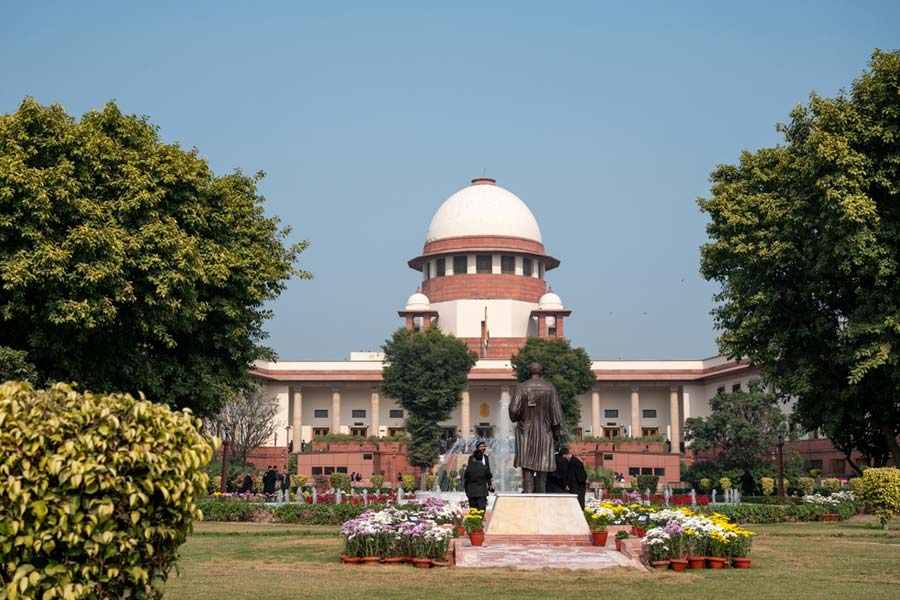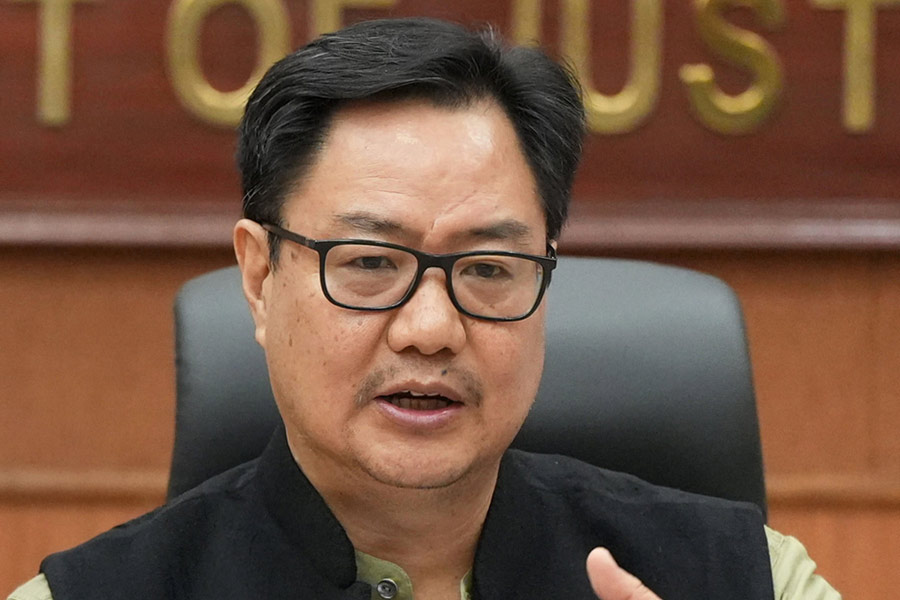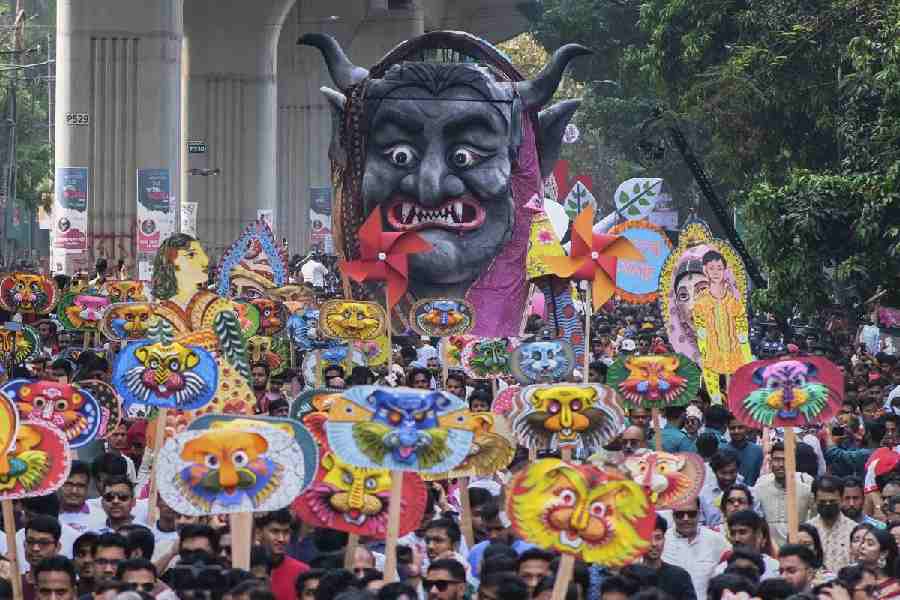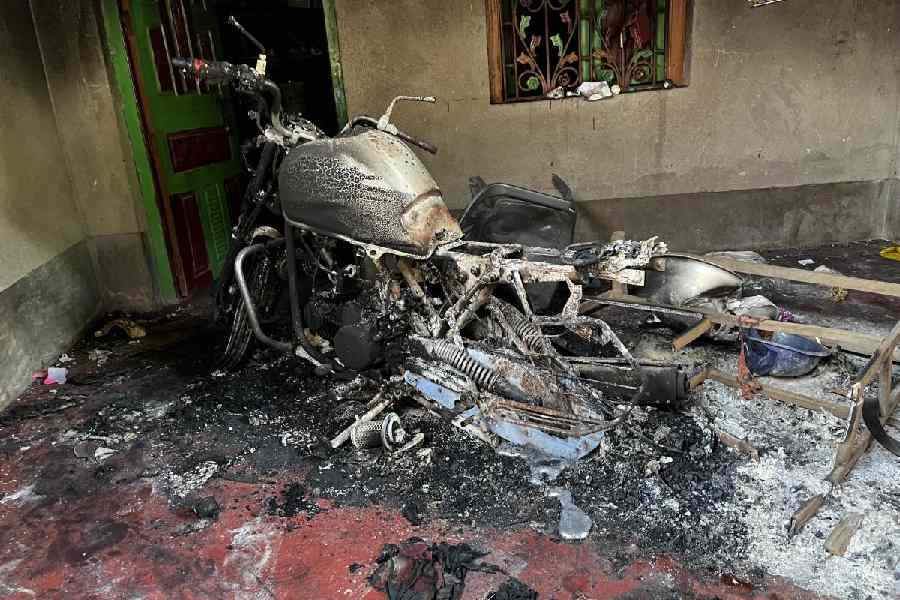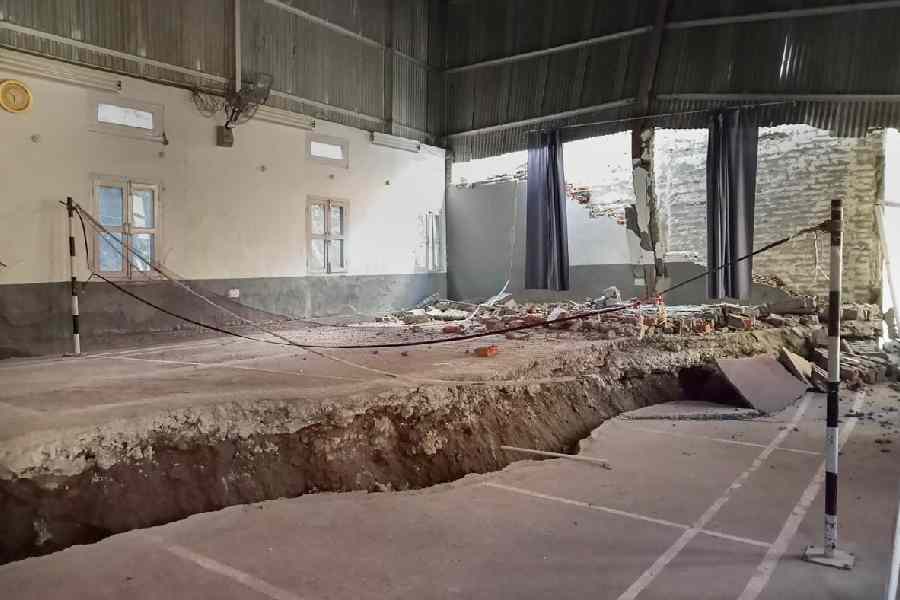
Life was always a struggle. It still is, she says.... The point is to go on. And write.
One doesn’t work for fame or money, she says. But one likes to leave a “legacy” behind.
Ketaki Kushari Dyson is surprised that it is a surprise that she is a bilingual author, writing in Bengali and English. It is something she inherited, she suggests, a sense of duality, and not only a matter of language. It has informed all her writing.
"I live in between," she says. Seated in her hotel room in the city, where she is attending the Tata Steel Kolkata Literary Meet, she tries to explain what she means. It is not a reference, one suspects, to the contemporary diasporic consciousness of duality that is the source of so much current Indian writing in English. It springs from something more old-fashioned.
Born in 1940, Dyson, who has been a resident of the UK from the Sixties and is the author of important research on the exchange between Tagore and Victoria Ocampo, the Argentinian woman of letters, recounts her early childhood days spent in a district town of Bengal. Her bi-cultural experience, as with so many other Bengali children of her generation, earlier and later, began with the English books given to her by her parents. In other ways, with the upheavals that were shaping the birth of a nation and dividing a people, though as a child she was hardly aware of them as such.
Everything was leading to Partition. In 1947, her father was posted as the SDO in Malda. She remembers him going up to the terrace of their house and hoisting a Pakistani flag, as it had first been announced that Malda would be part of East Pakistan. But the government officer would have to go up to the terrace again the next day, to replace the Pakistani flag with an Indian one, for the announcement had been a mistake: Malda was to remain in India.
Ketaki's household felt great stress about the unhoisting of the flag: an act that would symbolically, but unequivocally, end in one motion the hopes of many of becoming a part of another nation may not go down well. The fear was justified; the police had to make several arrests after the Indian flag went up. There could have been a riot. It was a drastic way of learning about the differences between Hindus and Muslims.
"The tension of the moment is still with me," says Dyson. But she knew nothing then of the slaughter that happened during Partition. That knowledge came later.
Time, too, is one thing when it is present, another in retrospect. It is diverse, and that is why "childhood information" is important, says Dyson, even as she apologises frequently for going back too far into her personal history. So when a city changes its name from Calcutta to Kolkata, "the variety goes". Kolkata is what Bengalis call the city. "Should we have to start calling Rome 'Roma'?" she asks. "We can't obliterate history."
Dyson had come to Calcutta in 1948, the year of Gandhiji's death - the only occasion on which she saw her father cry - and studied at St. John's Diocesan School, following which she attended Presidency College, where she studied English. Life took another turn when she left for Oxford to study English there. She would stay back in the country after her marriage, to a British physicist.
She travelled within the country, raised her children and looked for a job, and wrote.
Her work does not engage with history directly but it is exceptionally wide-ranging. Though best known for her research on Tagore and Ocampo, which she began after feeling drawn towards the extraordinary woman, writer and editor, Dyson is a poet, novelist, playwright and translator.
Rabindranath O Victoria Ocampor Sandhaney, her Bengali novel, combines research and translation work, following which she published research on the subject in English. She has written on Tagore's paintings, claiming that he had partial colour vision deficiency.
Her doctoral dissertation in Oxford was on a different "diaspora", which became a book called A Various Universe: The Journals and Memoirs of British Men and Women in the Indian Subcontinent, 1765-1856. "My whole life is between civilisations and cultures," Dyson says.
Her foray into Bengali fiction was serendipitious. She was asked by a well-known Bengali novelist to just bring together a young man and a woman, make them talk, and just write. This happened in the late 1970s, around the time when Dyson was in India for a year to teach English at Burdwan University.
Back in the UK, she began to write, on an ironing board her physicist husband had made specially for her to iron saris. Notan Notan Payraguli, the novel in Bengali that she wrote about contemporary life in the UK with a Bengali woman at its centre, was serialised in Desh in 1981-82 and became an instant success.
That was also about a "multi-culti" Britain, but not the one of today. "How easy it is to develop misconceptions if you only live in one part of the world," says Dyson.
But life in the UK was not easy. Despite her degree from Oxford, she had found no teaching job at a university. "In those days, there was no anti-discriminaton law," says Dyson. It was hard being a married woman, an Indian woman, a woman with children. She found it difficult to explain to interviewers what she could do to look after her children if she got the job, she says.
Life was always a struggle. It still is, she says, as she is trying to get her work on Tagore and Ocampo translated into Spanish. The point is to go on. And write.
One doesn't work for fame or money, she says. But one likes to leave a "legacy" behind. But that also looks uncertain, given the fragile state the world's environment is in today.


